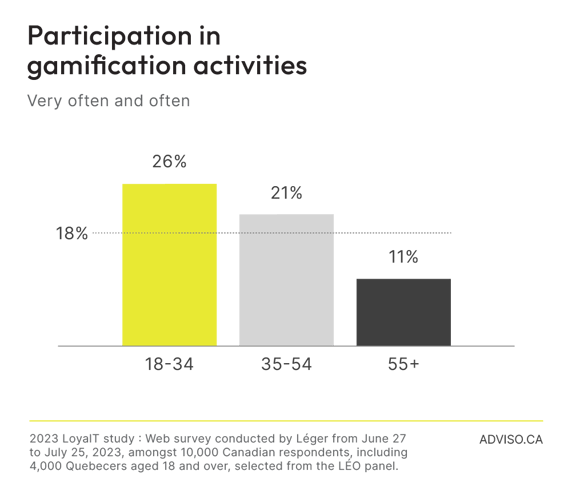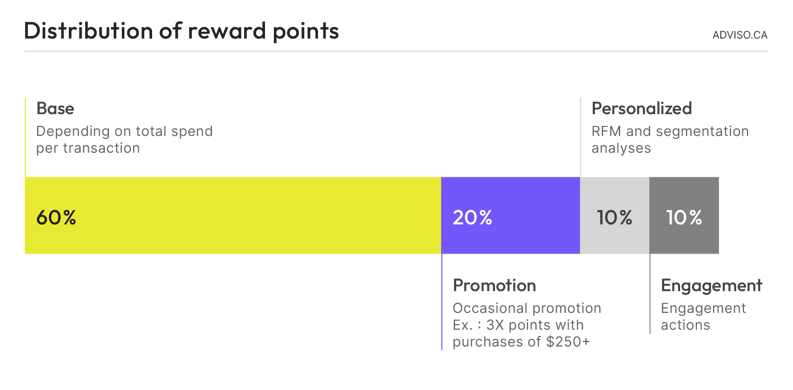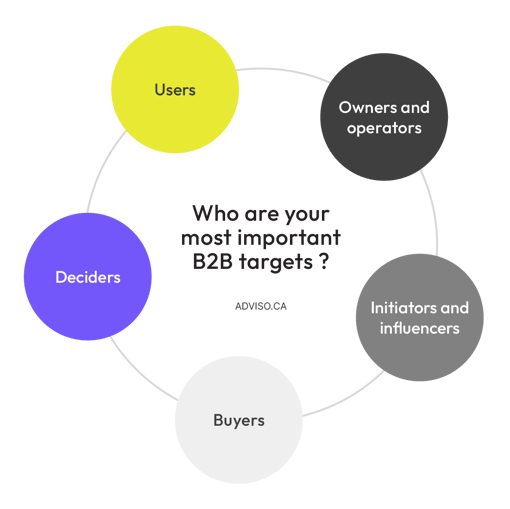Six key factors for success with B2B loyalty programs
A good B2B loyalty strategy delivers growth. To put together a successful program, you need to consider 6 important aspects.
A loyalty program is an indispensable solution for B2B businesses aiming for sustained growth. By fostering repeat customers and larger volume orders, this strategy lets companies grow their margins and ensure greater customer loyalty.
In many cases, introducing a loyalty program also lets you resolve problems associated with volume discounts whose margins no longer correspond to the reality of today’s costs.
Like with B2C, B2B loyalty program development involves a few factors that are determinants of the program’s success. Here are six of them.
1. Offer an experience with perks
Although the B2B sector generally adopts a more traditional approach to loyalty programs, it’s important not to neglect the importance of benefits to your approach.
Even without involving points or rewards, there are a number of options available to you.
Recognition
Celebrate your clients’ achievements within your loyalty program. Send a personalized thank-you message regarding:
-
their progress on your platform
-
their participation in a special event, such as a VIP, trip or training event
-
the achievement of specific goals, such as an increase in annual sales volume
Surprises
You should occasionally surprise your clients with rewards of points or unexpected gifts. This tactic, also known as “surprise and delight”, provides a feeling of satisfaction and also creates a positive emotional association with the brand.
Contests and challenges
Organize periodic contests related to your products or services. Clients can participate and win rewards for their involvement, which makes for a fun, engaging experience.
Exclusive access
Offer exclusivity: sneak peaks at or early access to new products or services. This will make clients feel special and show they are valued, which will strengthen their loyalty.
Gamification
Encourage engagement amongst the program’s members by offering amusements such as games, quizzes or contests, which provide additional points or badges. Take advantage of these elements to communicate your brand differentiators as well as your values.
Show members their progress in the program through visual elements, such as progress bars or other visuals.
Consider employing tactics that will encourage them to:
-
complete their profile or provide useful information
-
move to the next level in the program
-
perform X number of transactions that month
-
Etc.
Use these to develop schemes that are fun but also incorporate specific questions so you can learn more about your clients by obtaining information about the company (first-hand, zero-party data).

With over 40% of people 18-54 participating very often or often in gamification activities,1 B2B companies should seriously consider this strategy.
2. Offer different kinds of rewards
Although it’s easier, simply offering price discounts in exchange for points (ex., 250 points = a $50 credit) doesn’t appear to be the best solution for reaching the largest number of users.
Make sure you find out your members’ preferences with regard to the rewards and benefits they would like to receive.
In most B2B loyalty programs, our experts have noted that using a digital catalogue is often the approach that reaches the most members. A variety of bonuses are thereby offered in exchange for points earned by members. Here are a few examples:
-
digital products
-
gift cards for various retailers (ex., Amazon)
-
unique experiences (a weekend package including accommodations, a helicopter tour, etc.)
There are even specialized firms offering a personalized bonus catalogue service (to companies managing B2B loyalty programs) which also includes fulfillment.
Source: Screen capture taken from The Ultimate Guide to B2B Promotions and Loyalty Programs
However, points aren’t the only strategy to adopt. B2B clients also appreciate non-monetary benefits. A few such examples are:
-
priority access to certain services
-
authorized representative
-
free training and certification
-
useful educational content
-
VIP experiences
3. Don’t put all your points in the same basket
Don’t make the mistake of issuing points solely for transactions (i.e., the classic $100 purchase = 100 points). Our experts’ opinion is that this isn’t the most effective strategy for B2B. You shouldn’t allocate more than 60% to 65% of your total annual points budget to transactions.
Use points to reward other types of behaviour that promote:
-
engagement: use of the mobile app, attendance at occasional in-person events
-
referrals: new clients referred by a member
-
choosing the right channel for submitting an order
-
an increase in volume: 3X the points

You could even offer points based on the channel used. For this option, it’s highly recommended to encourage and reward certain client segments for using a specific channel, such as your e-commerce platform. This will avoid overloading your reps (available by phone) and allow them to instead focus on more major clients or even help clients with complex orders that require support. Wise management of points will therefore allow you to reduce certain operating costs.
4. Identify your priority targets
Identify the various types of stakeholder in your B2B business and prioritize those that are most important to your organization.
-
Owners and operators
-
Initiators and influencers
-
Buyers
-
Deciders
-
Users
Ask yourself these questions:
-
Who are the people you work with?
-
Which people have the biggest influence on your program’s goals?
-
Who would you like to ask to participate in your program?

In general, buyers are the priority target for B2B loyalty programs. For other types of stakeholder, various approaches can be employed based on your relationships with them and your access to them.
5. Optimize your user experience (UX)
User experience is a key factor in the success of any loyalty program, whether B2B or B2C. During our last LoyalT Study, this factor was even shown to be the second most sought after by Canadians.1
1 LoyauT 2023: Web survey conducted by Léger from June 27 to July 25, 2023, amongst 10,000 Canadian respondents, including 4,000 Quebecers aged 18 and over, selected from the LÉO panel.
As part of a B2B loyalty program, well-planned user experience translates particularly into:
-
-
the program’s ease of use
-
fast sign-up
-
useful features that bring added value or let members save time
-
To really understand your clients, create user journeys through various channels (phone, representatives, e-commerce, etc.) and platforms (mobile device, computer, tablet). Your approach will be quite different if, for example, your company does business with entrepreneurs who almost exclusively use mobile as opposed to company buyers using a desktop computer.
For more information, read this article from our Adviso colleague: Why are loyalty programs increasingly relevant and profitable?
6. Choose the right key performance indicators (KPI)
Use the right indicators to ensure your loyalty program and its promotion are leading to better client engagement as well as contributing to the company’s business goals.
For a B2B loyalty program, the main indicators are as follows:
-
number of registrations in the program
-
% of active members per segment
-
average value of orders
-
order frequency
-
number of purchased product categories
-
increase in share-of-wallet when data on sales opportunities are available
-
reduction in the use of volume discounts
-
reduction in operating costs related to your clients’ use of the right channels
Make sure you identify and measure these variables before launching your program. This will enable you to access and use them as part of a pilot project or market test.
What is the potential impact of a loyalty program on your B2B business? Let’s figure it out together.
|
|
Watch (in French): |











